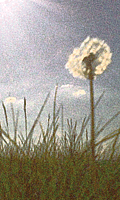


NEWS:
22 hours this month including two sessions and a special tribute to CAN
Artist Info
|
Ichimaru  Image from Discogs  Ichimaru (市丸) born Mitsue Goto (後藤 まつゑ Gotō Matsue, July 16, 1906 – February 17, 1997) grew up in Japan with eleven siblings under harsh conditions. She left her family at the age of fourteen or fifteen to work at a geisha house. She spent much of her early years working at a hot springs spa in Asama, located in the Nagano Prefecture as an oshaku waitress. One time she was asked to sing by one of her customers, she was terribly embarrassed at her inability to sing and vowed to improve her skills. Ichimaru (市丸) born Mitsue Goto (後藤 まつゑ Gotō Matsue, July 16, 1906 – February 17, 1997) grew up in Japan with eleven siblings under harsh conditions. She left her family at the age of fourteen or fifteen to work at a geisha house. She spent much of her early years working at a hot springs spa in Asama, located in the Nagano Prefecture as an oshaku waitress. One time she was asked to sing by one of her customers, she was terribly embarrassed at her inability to sing and vowed to improve her skills.At the age of nineteen she moved to Tokyo and joined the Ichimatsuya Okiya, and took on her new name, Asakusa Ichimaru. In an effort to improve her singing skills when she moved to Tokyo, Ichimaru undertook shamisen and singing lessons from Enchiga Kiyomoto, who was a famous female shamisen artist. She made great progress but still felt she could get better. Ichimaru then undertook training with the Grand Head Master Enjudaiyu Kiyomoto V's son, Eijudaiyu. The training paid off and soon she was in great demand in not only her own geisha district but others around hers such as Yanagibashi, Akasaka and Shinbashi. Due to her great singing talent, Ichimaru was asked by The Victor Recording Company to sign a contract in 1931. She recorded her first song for a movie called Nure Tsubame (Wet Swallow) which became a hit. She followed her debut up with another hit, "Tenryū Kudareba" (Down the Tenryū River), which saw her become a superstar. Due to the success of her budding music career she decided to retire from being a geisha to concentrate solely on her singing career. Throughout the 1930s Ichimaru continued to record new songs and performed for Japanese troops at home and abroad. By the end of the decade her recording career had slowed down to a complete halt due to World War II. After the war in 1948 she began to record music again boost the morale of post-war Japan. At the end of the 1940s he started her own radio program called "Mitsukoshi Calendar of Songs" which would continue to be a success for the next ten years. After the war Ichimaru became interested in US culture, becoming greatly interested in jazz music. The result of this interest was the hit song "Shamisen Boogie Woogie", composed with an American jazz songwriter. In 1950, she became the first Japanese singer after World War Two to be invited to Hawaii to perform. This performance was followed other international concerts. During this time Ichimaru was singing for kabuki, and composing her own ko-uta, a style that would later become to be known as "Ichimaru Air". Read more on Last.fm. User-contributed text is available under the Creative Commons By-SA License; additional terms may apply. Artist biography from last.fm Some other places to look for information: last.fm Discogs MusicBrainz |
